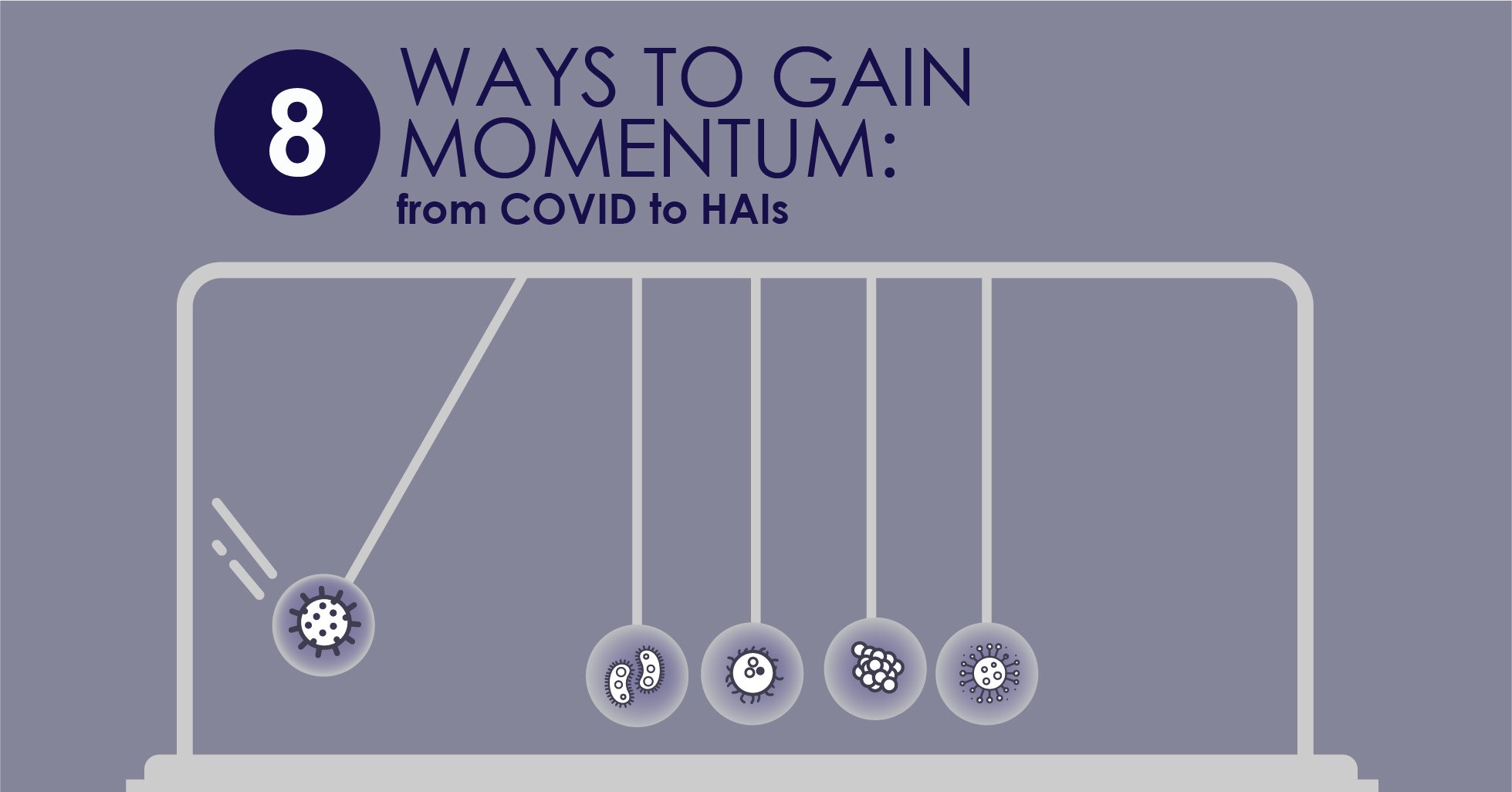8 Ways to Gain Momentum: From COVID to HAIs

 We all experienced a huge learning curve thanks to the SARS-CoV-2 pandemic. The general public learned about infection control, sanitation, and PPE. Medical professionals learned about transmission rates, symptoms, treatment plans and pharmaceutical interventions. We need to ride this wave of intense learning into the "next normal," living and working in a world which still has hospital-associated infections that will continue to claim the lives of patients if we don't stop them. Here are 8 ways we can make sure we don't lose momentum as we move into the future.
We all experienced a huge learning curve thanks to the SARS-CoV-2 pandemic. The general public learned about infection control, sanitation, and PPE. Medical professionals learned about transmission rates, symptoms, treatment plans and pharmaceutical interventions. We need to ride this wave of intense learning into the "next normal," living and working in a world which still has hospital-associated infections that will continue to claim the lives of patients if we don't stop them. Here are 8 ways we can make sure we don't lose momentum as we move into the future.
1. We are way more comfortable with masks now. They are not as off-putting, both as the wearer and the observer. We should continue to make masks available to visitors in hospitals, and encourage their use outside the hospital for vulnerable individuals facing flu season or other outbreaks.
2. Enhanced cleaning is familiar - and expected - by all of us now. Environmental services workers should will hopefully feel less intrusive as they go into patient rooms, since we all have a renewed appreciation for their role in preventing infections.
3. Even the general public knows the term "hand hygiene" these days! Visitors, healthcare workers, and patients have gotten used to frequent and regular hand-washing or sanitizing. We should continue this habit by making sanitizers easy to find for everyone, not just medical professionals!
4. Air flow can no longer take a back seat to other design considerations. Hospitals already concentrate on air cleanliness, but other medical facilities to consider the steady flow of air, ventilation, and even air purification to avoid preventable transmission.
5. Best practices, treatments, and ideas spread with lightening speed as we tried to diagnose, isolate, and treat pandemic patients. We need to use this same connectivity to share our ideas about infection control. Maintain the relationships forged during the waves of COVID, keep meeting with colleagues and regional experts, and keep sharing data!
6. The general public knows a lot more about some aspects of infection control, but this pandemic demonstrated that gaps in knowledge and understanding can lead to decisions based on emotion and rumor rather than data and trusted sources. We need to redouble our efforts to use every interaction with the public as an opportunity to educate and inform.
7. PCR testing, rapid tests, and screenings all became commonplace for healthcare workers and those seeking medical care. We need to continue to use these proactive approaches to help reduce transmission of HAIs. Early detection through screening and contact tracing outbreaks can mean fewer transmissions.
8. With staffing shortages, pressures for quick patient turnaround, and unstable financials, hospitals need technologies that work alongside healthcare workers, but do not require any additional work. Biocidal surface EOSCU, which continuously and actively kill pathogens throughout the day, between cleanings, helps reduce contamination in the patient space, reducing the spread of disease-causing pathogens.
One of the best ways to make something good come from these past two years is to not lose momentum. The work we put in and the progress we made can help propel us into a new era of infection control, where everyone plays a vital role. What are some ways you are applying lessons you learned during COVID? Share in the comments below!
![EOScu Logo - Dark - Outlined [07182023]-01](https://blog.eoscu.com/hubfs/Eoscu_June2024/Images/EOScu%20Logo%20-%20Dark%20-%20Outlined%20%5B07182023%5D-01.svg)




